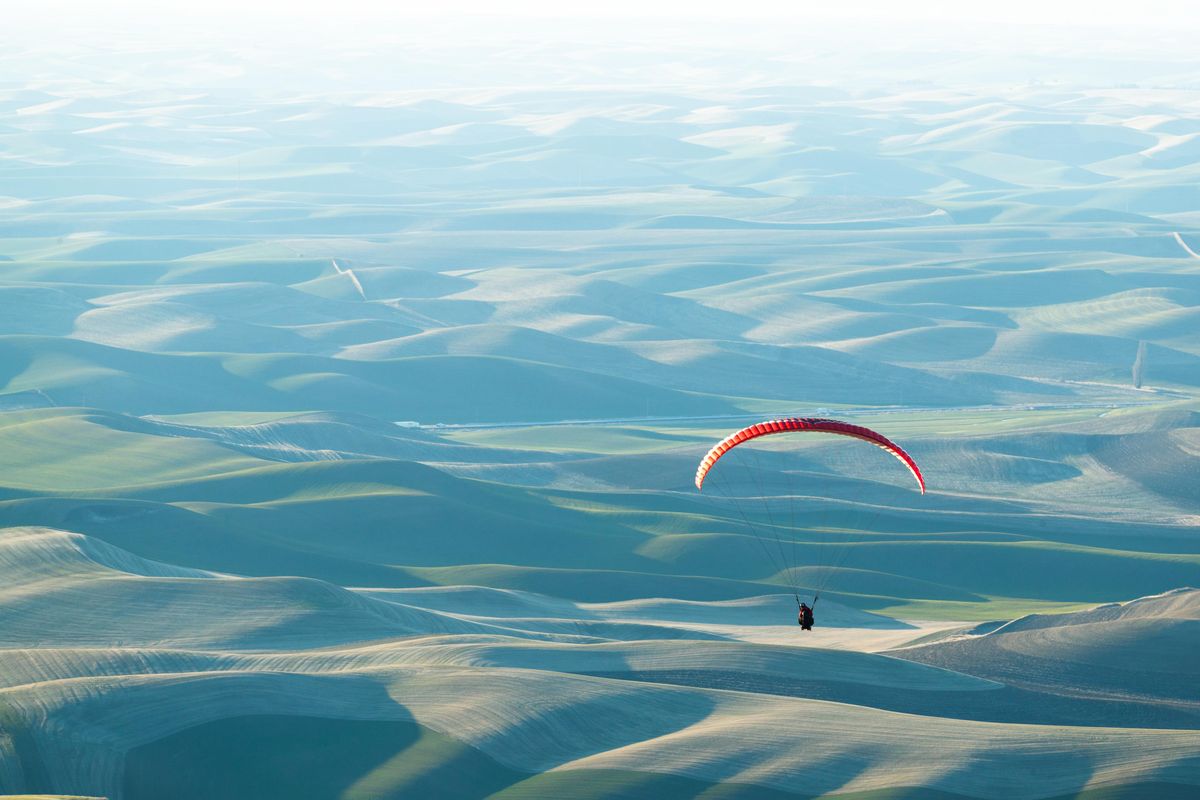Washington man who competed in Red Bull extreme flying race inspires Spokane wind warriors

On the peak of an Austrian mountain, Jesse Williams had to make a potentially life-or-death decision.
To fly or not.
“The nature of the event just encourages you to fly in all conditions and you have to know your own limits,” he said.
It was Williams’ second day competing in the Red Bull X-Alps, a multiday paragliding race. The goal was to make it across the Alps from east to west, finishing in Monaco on the Mediterranean coast. Athletes can only travel by foot or by paraglider across the region’s rugged terrain.
Williams, from the Seattle area, competed in the race in 2017 for the first time. The race takes competitors high into the mountains where weather can be unpredictable with wind gusts creating potentially deadly situations.
“The big nemesis for us is turbulence,” Williams said. “I had flying on my mind, but I knew there would be these dangerous windy conditions going through.”
On that second day Williams chose not to fly, although several other, more experienced, pilots did. Although that decision contributed to him finishing 18th overall, he said he was happy with his decision.
“I really focused on making smart decisions for myself,” he said. “Because I knew there would be a lot better pilots there flying in conditions that I did not want to fly in.”
Williams spoke to Spokane’s hang gliding and paragliding club, Center of Lift, Wednesday night. Although Williams’ experience in the Alps was more intense than most recreational hang gliders and paragliders may experience, the core experience remains relatable.
“I grew up with some of the early Superman TV series where you just run and your feet leave the ground and you’re flying,” said Steve Baran, who is co-founder and president of Center of Lift, a chapter of the U.S. Hang Gliding Association. “Well, I can do that now. It’s kind of like having your own magic carpet.”
Baran has been hang gliding since the 1970s. In that time, the sport has grown in popularity, especially in the Spokane area.
“There is no top end. You just constantly just keep getting better,” Baran said. “So the satisfaction out of it grows, too. It’s somewhat similar to an addiction, I guess.”
Opportunities for hang gliders and paragliders are growing in the area. Steptoe Butte, on the edge of the Palouse, has been a haven for wind warriors for decades. That was briefly held up last year when it was deemed that hang gliding was illegal off the butte. Hang gliders have a rigid wing while paragliders use a type of parachute to catch the air.
That issue was resolved last year when the Washington Administrative Code was revised to allow hang gliders, Baran said.
Now Baran has turned his attention to opening up hang gliding and paragliding opportunities in other areas, such as Chewelah.
Baran said that area offers a multitude of options for interested flies. Once public and private land use agreements are worked out, Baran believes the area will draw people from all over the country.
“Probably within a couple years it’s going to be a destination place, because pilots from other areas will want to come fly,” he said. “We’ll have places within 10 road miles of downtown Chewelah that face every wind direction.”
The primary issue for the sport is one of education, he said. Most people don’t understand the basics of the sport, often equating it with more dangerous activities like BASE jumping or wingsuit flying.
“It’s definitely dangerous,” he said.
But the dangers can be mitigated if you do it safely and in the appropriate conditions. That requires the appropriate training and instruction, he said.
That’s the goal of Center of Lift and the goal of events like Jesse Williams’ talk, Baran said.
In addition to opening up new flying areas near Spokane, Baran hopes to get hang gliding and paragliding instructors back in Spokane, where there are none. The closest instructors are in Missoula and Cashmere, Washington.
“Lessons are pretty important and the more you do the better it is,” he said. “It saves you time and money, because you’re going to damage equipment, or yourself, if you don’t take lessons.”
For anyone interested in learning to hang glide or paraglide, Baran recommends getting in touch with the Center of Lift (sites.google.com/site/colcenteroflift/about-us) and accompanying some of the fliers on a trip to see what it’s like.
The sport might look easy, but it’s a significant time and resource investment, he said.
“The key is just getting out,” he said. “Because if people want to see what it’s really like, they need to devote an afternoon or at minimum an evening.”